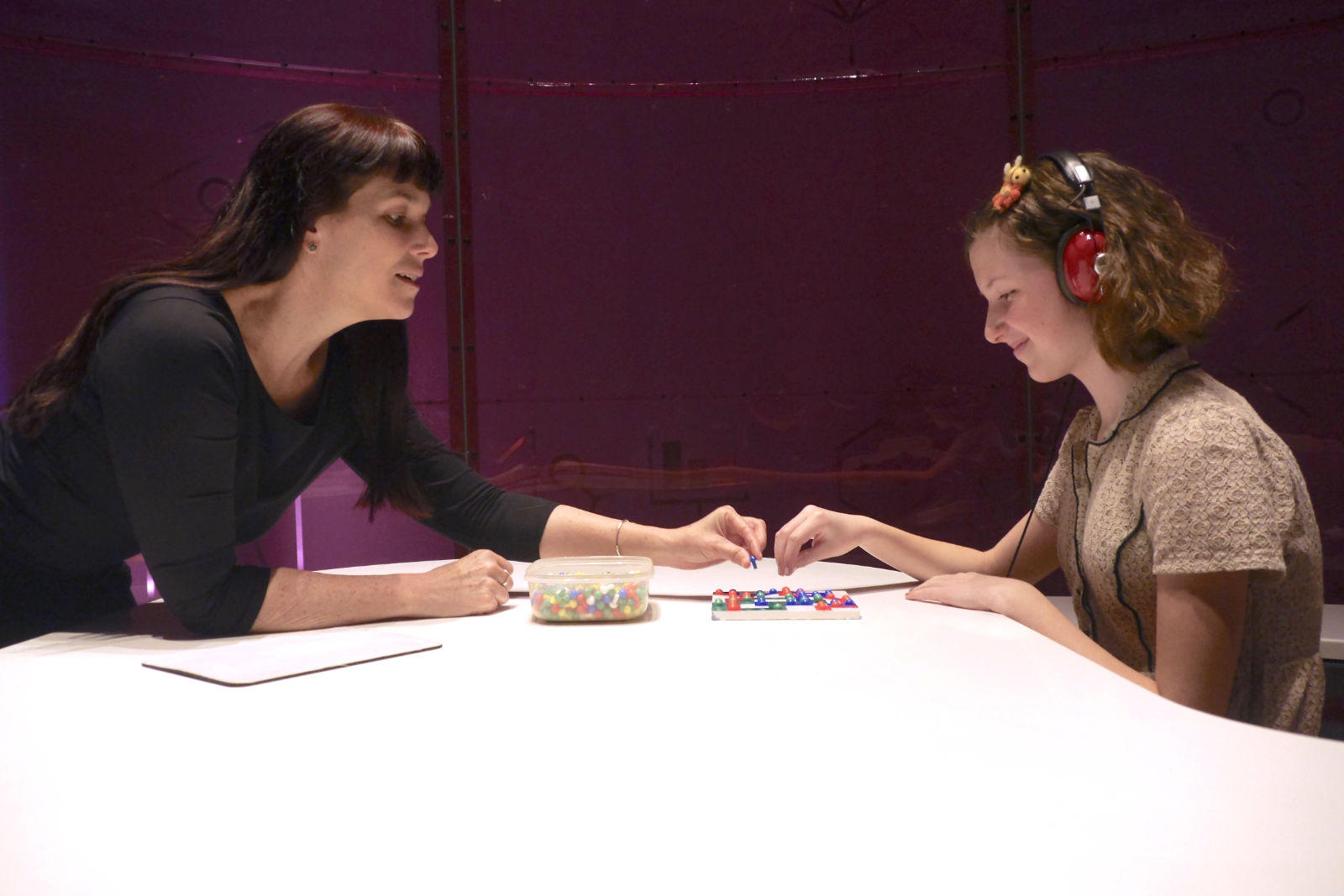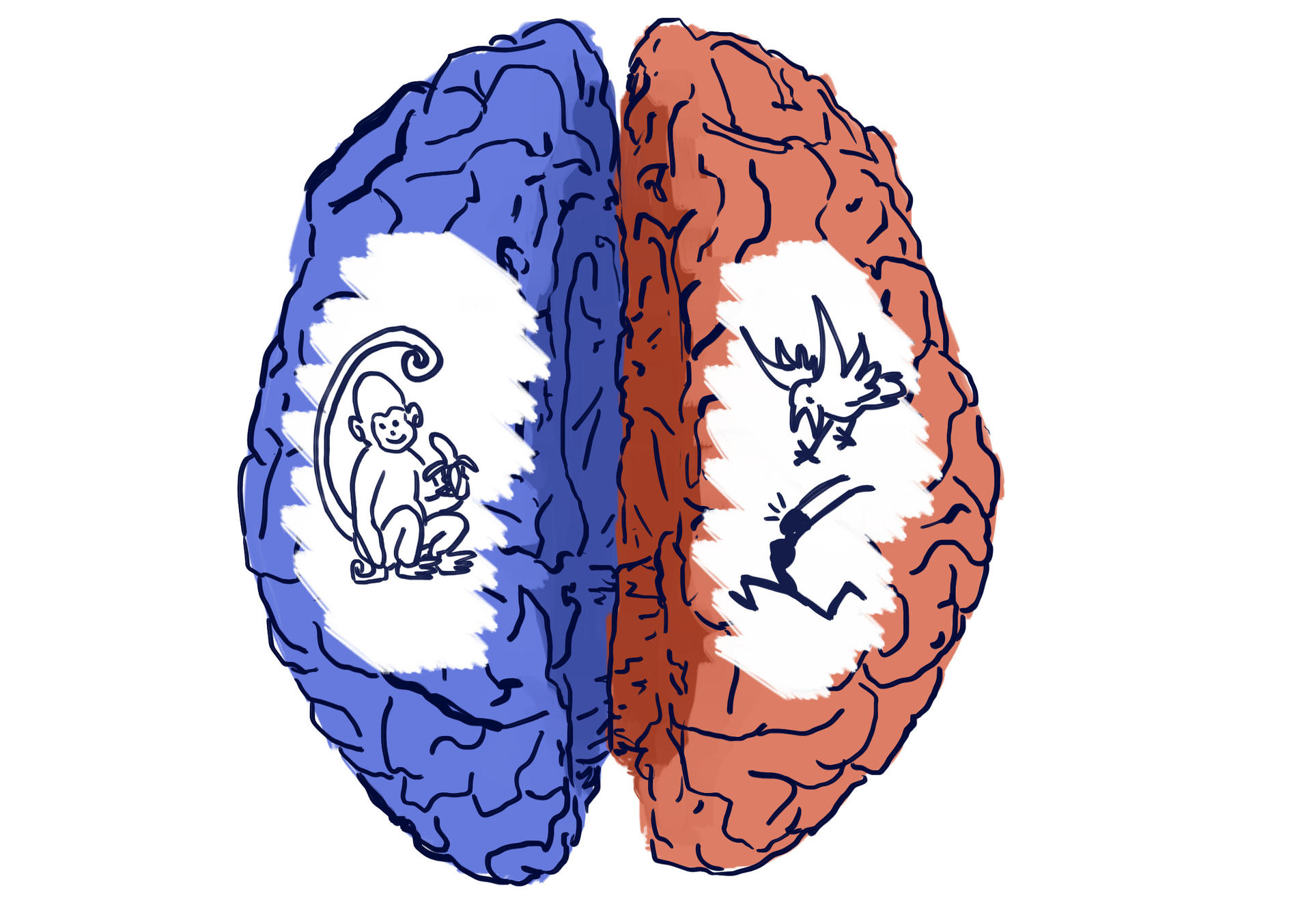
Live Science
In 2019, we caused a splash at the Science Museum with a summer of interactive science experiments about the human brain.
The exhibition resulted in the largest set of data on brain laterality ever produced. Our researchers are now writing papers based on these findings.
Thank you to the thousands of people who took part in Live Science!

Your brain is older than you think
Modern humans emerged about 200,000 years ago.
But some parts of your brain are more than 500 million years old.
Are these parts more than a leftover? Do they do anything important for us as humans?
Yes. Some of our most important human behaviours, like speaking and recognising faces, have origins linked to this ancient 'vertebrate brain'.
Live Science gave thousands of Science Museum visitors the chance to use their eyes, ears and hands to find out more about how their ancient brains actually work.
Taking part in Live Science!
In the experiments visitors worked with scientists to solve puzzle boards, recognise faces and react to different sounds.
People from all over the world tried the Manipulation Station 👐 and the Get-A-Grip Station 🤙 Let's not forget the Affectation & Articulation Station 🤬 And what went on in the Speculation Station 🤔

The Divided Brain
As scientists, we were interested in laterality – how the two sides of your brain control your behaviour in different ways.
The Live Science experiments explored how you use this divided brain to experience the world around you.
Even though we all share the same genetic story, there are individual differences in the ways our divided brains work – think of left and right-handed people.
Taking part in Live Science helped our visitors learn more about their brains, and helped us better understand how humans work.
An experience of science research
By coming to the exhibit, visitors got a taste of what it's like to be a research scientist.
The Me, Human team was a mix of experienced researchers and enthusiastic student volunteers. Their passion about making science accessible to everyone brought the science alive for some very appreciative visitors.
We expected people to stay for 10-15 minutes, doing one or two experiments. But many stayed for a full hour so that they could complete the set, and our team fielded all kinds of thoughtful questions about evolutionary psychology.
Rich data
Because we had such a wide range of experimental subjects – different ages, different cultures, different genetics – the experiments provided an unprecedentedly large and diverse set of data about brain laterality and its relationship to our behaviour.
Schools and colleges
We welcomed school groups from across the country, including our partner schools in London. These students not only came to participate but created wonderful art for us to display.
Photo: Paula Manning and her team are putting up amazing brain artwork from Mayflower Primary, Lansbury Lawrence Primary, Queensmill, Fulham Primary, Fulham College Boys' School, Fulham Cross Girls’ School, The Vale, Corbets, Marner Primary, Phoenix Primary, George Green’s Secondary and Phoenix Satellite at Bow Secondary.
Live Science legacy
The Live Science exhibition has contributed to research across three London universities.
A key research aim is to identify infant behaviours that indicate neuro-developmental disorders like autism. This will help health specialists give the right support to families more quickly.
Academic papers based on Live Science data will be published during 2021-22.